Sergeposters
Jakub Serge Malec, better known under Sergeposters moniker, humbly calls himself a “gradient artist”. His finely tuned style is recognised at first sight and brings an atmosphere of a better future.
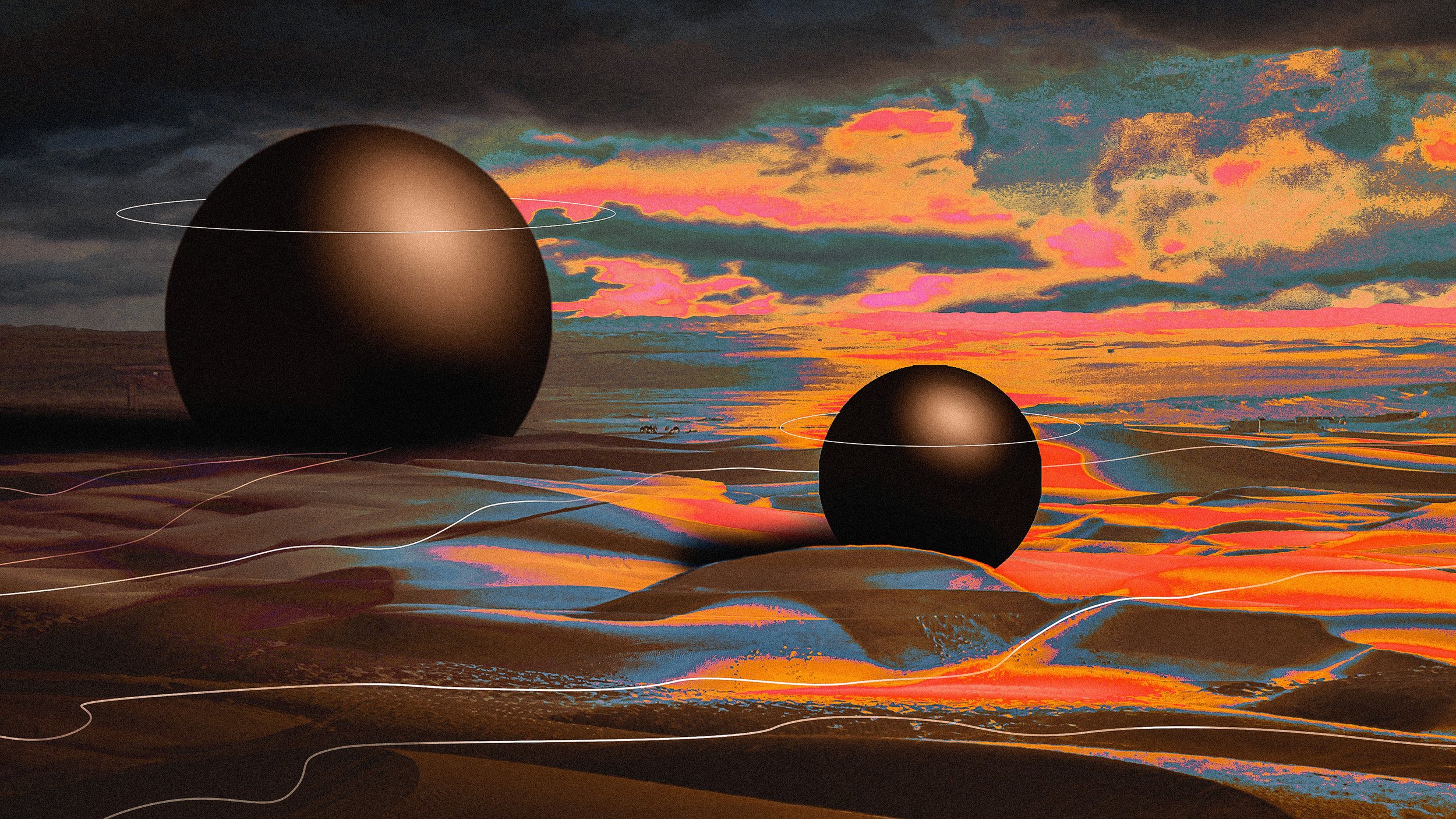
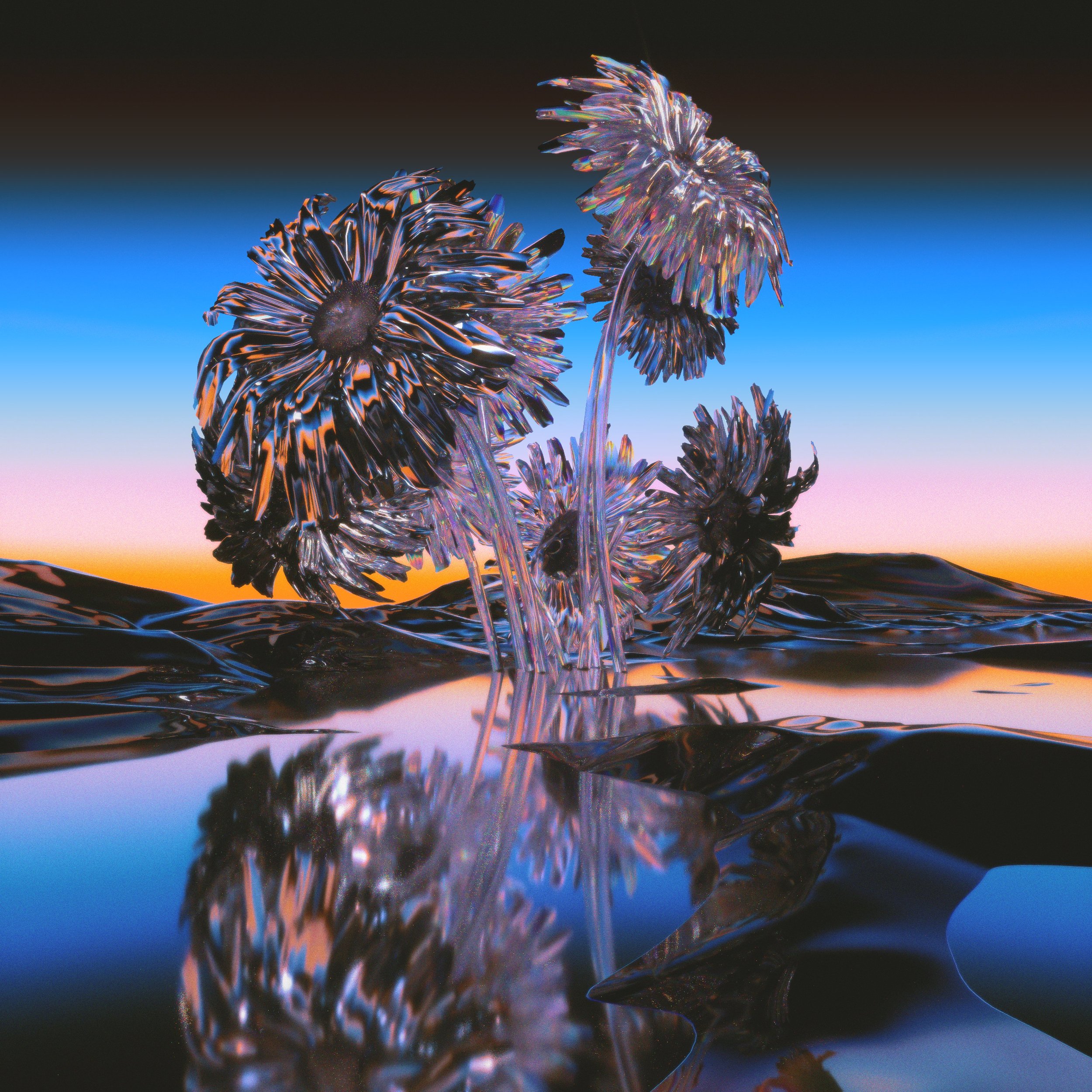
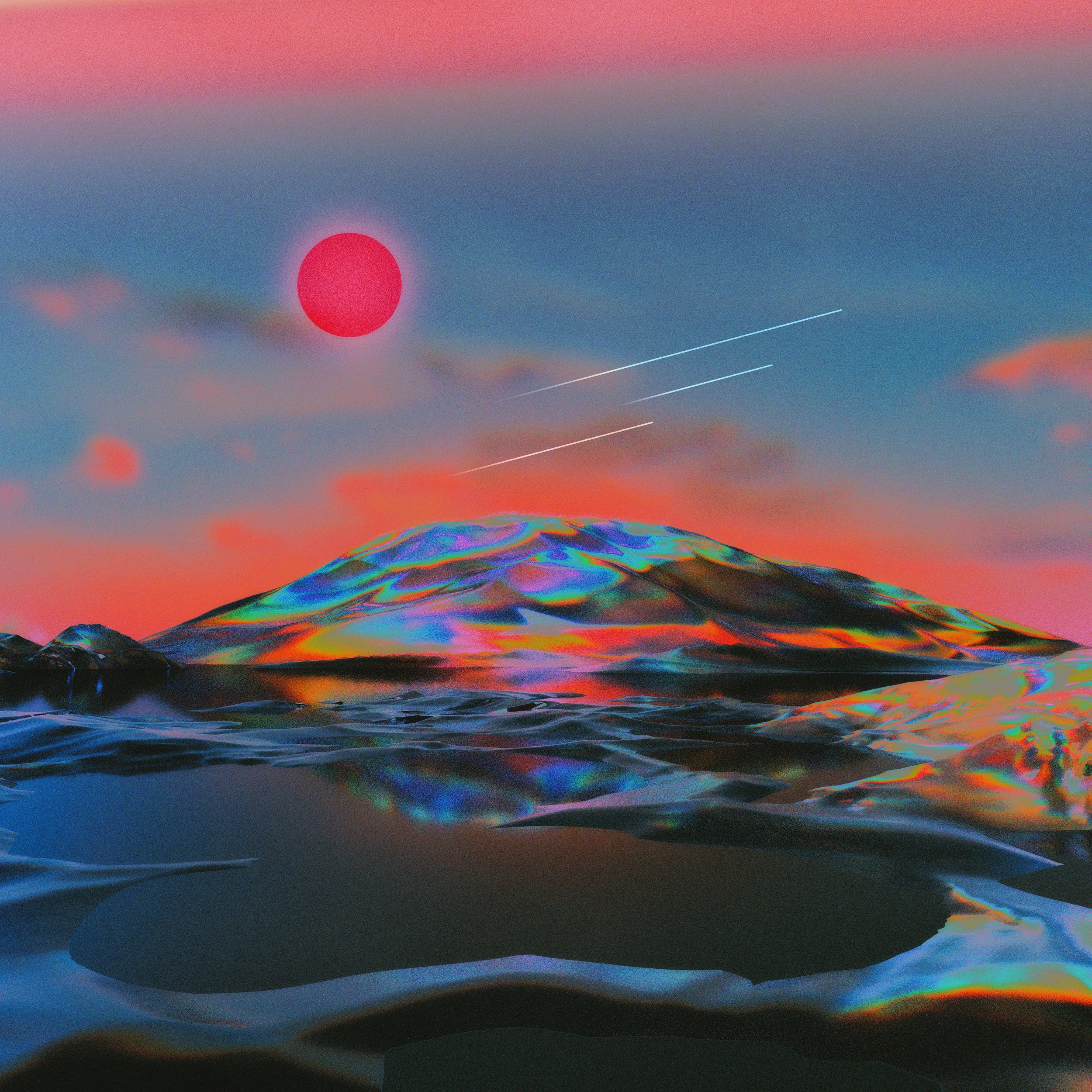
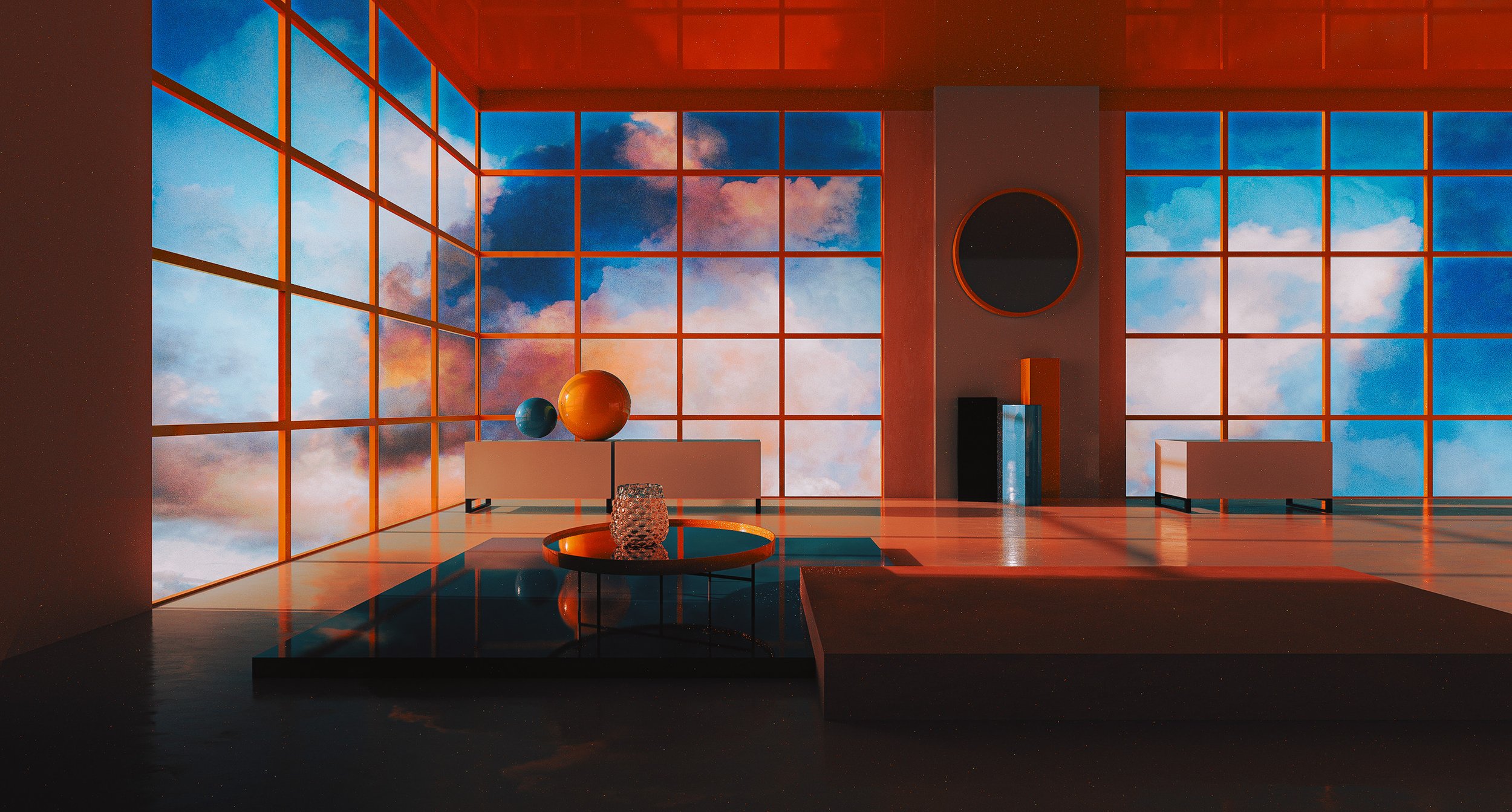
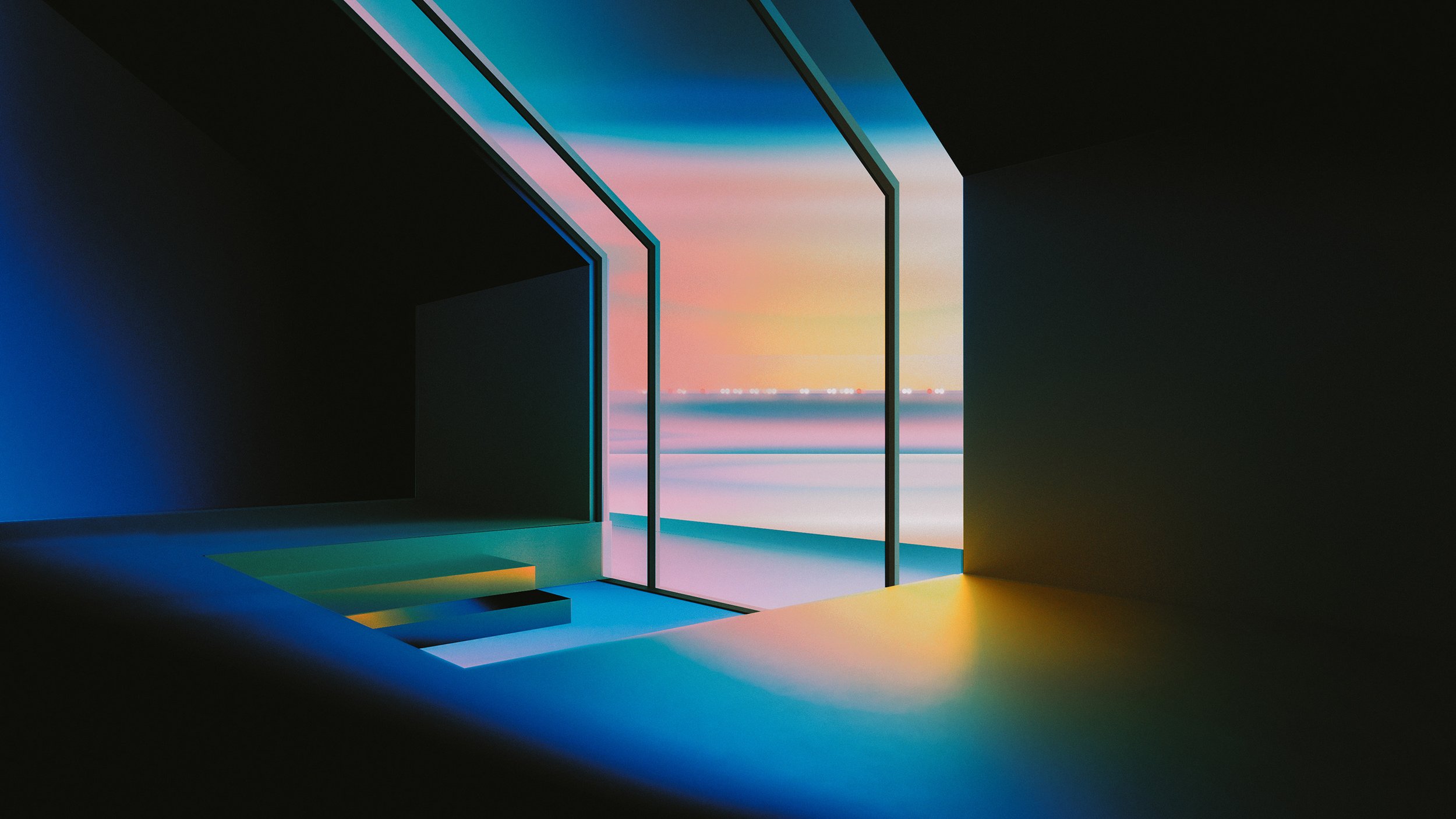
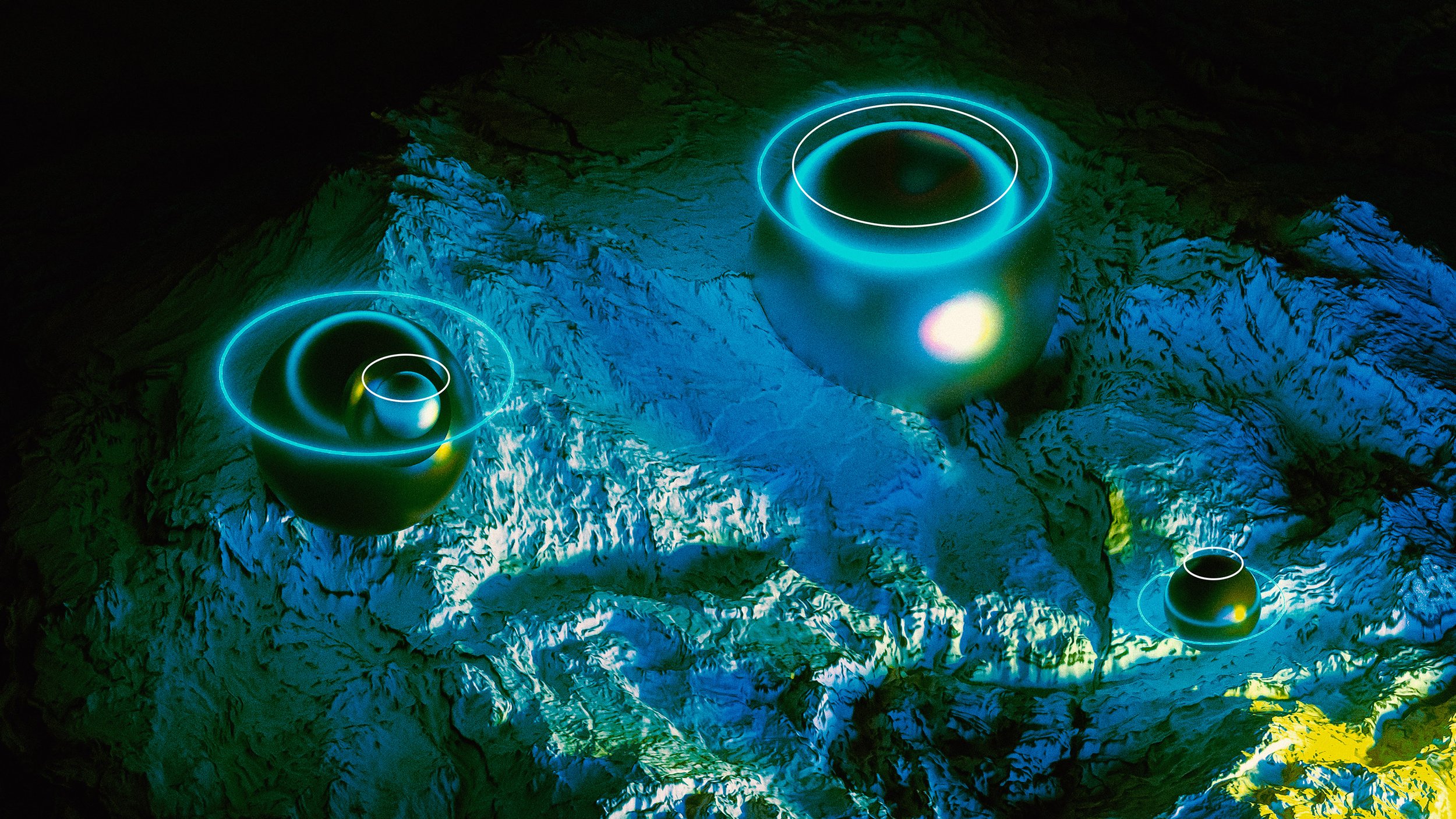

Jakub Serge Malec, better known under Sergeposters moniker, humbly calls himself a “gradient artist”. His finely tuned style is recognised at first sight and brings an atmosphere of a better future.

From March 15 to 16, 2023, the Moscow gallery Glubina hosted the exhibition "Forgotten Landscapes," curated by Narmina Askerova. This large-scale artistic event brought together works from 14 visual artists and photographers, along with a grand conceptual audio-literary performance titled "Lost in Between" by artist and writer Elena Timokhina. "Forgotten Landscapes" was dedicated to the artistic exploration of the existential rift between humanity and nature in the broadest sense. The participants in the exhibition, upon discovering this rift, took on various roles: explorers of the rift, apologists of the rift, mourners for the eras preceding this rift, researchers of the rift, and so on. The distance between modern humanity and nature turned out to be a rich field of potential meanings, a mystery, and a resource for drawing both inspiration and despair. "Forgotten Landscapes" serves as a multifaceted manifestation of the inevitable separation, where the positions and roles of people and natural phenomena are interchangeable and elusive, attempting to comprehend the irreversibility of this rift as both a socially nostalgic and eschatological phenomenon. Although the entire event represented a captivating cascade of artistic and performative delight, in this article we would like to focus on four participants who, in our opinion, realised the most distinctive and bold artistic concepts.

The reflection of the sprawling branches of an autumn leafless tree on a thin layer of water resting on some object in an urban environment. Ripples spreading from raindrops. Sandy park soil. Photographer Victoria Skutina sees the meaning of the rift between humanity and nature in the endless multiplication and deformation of reflections. According to her artistic concept, this rift has arisen due to the fundamental geometric difference between human-made fruits and those of the natural environment. Where nature is complex, fractal, and resists being divided into Euclidean primitives, the human dimension gravitates toward local, predictable forms and images. Of course, Skutina goes beyond merely observing that the surrounding environment is unconsciously complex, while human creation is consciously simple; nonetheless, this is an important assertion. Through her mesmerising and razor-sharp works, the photographer illustrates that this binary opposition exists but seemingly overcomes itself through the effect of one pole's reflection in another. A tree growing by itself can be mirrored on an ugly iron or concrete circle performing obscure social functions. The reflection of the tree is ephemeral, becoming a projection of one world onto another. Yes, this projection can easily lose its clarity with the breeze or a sudden downpour. However, it also signifies that the rift is theoretically surmountable or that it can be reconstructed by focusing on other, less noticeable connections between things and worlds.
According to Kseniia Chumakova, the main point of conflict in the rupture between nature and humanity lies not in creating a parallel "human ecosystem" in opposition to the natural habitat. It goes deeper and finds this rupture primarily in humanity's refusal to closely examine what surrounds them. It seems as if humans have fundamentally chosen not to contemplate natural things and to ignore what they do not understand within them. The rupture occurred when humans began to see in nature only what they chose to see. Consequently, Kseniia Chumakova's artistic project appears to be based on restoring to humans the motivation and time to contemplate nature. Her photograph "Nature" is both simple and complex, modest and provocative, compelling one to gaze into it. It seems to insistently exclaim, Identify me! Classify me! Find an explanation for me! This insistence emanating from the concise image of natural texture resembles the calls of New Age coaches demanding a break from the automatism of everyday life. Yet, Kseniia Chumakova also deconstructs this approach. She respectfully acknowledges that the human psyche optimises processes. Her works do not call for total mindfulness, grounding in bodily processes, or working with blind spots. On the contrary, she constructs meditative attractions that should work if not instantly, then in a very short time, rather than becoming a painful ordeal of yet another self-proclaimed course on transforming life in 21 days.

Yuri Kurganski is not only a talented digital artist but also a remarkable combination of ironic softness and romanticism. Where other artists become sarcastic and cut through the truth, he seeks opportunities to nurture lyricism, pastoral beauty, and humanity. His vision of the rift between nature and humanity is the most extravagant and touching. In his works, especially in “Autumn Jungle,” he comes to the realisation that it is not humanity that has severed its ties with nature but rather nature that has withdrawn into the shadows. Nature, not humanity, initiates the separation. The silent nature is both a mysterious, estranged figure and a mother all at once. Nature is present here, and yet it is absent at the same time. Nature has allowed humans to separate, but it continuously reminds them of its presence through traces and messages. The image of a glowing—almost biblical—tree amidst a dark artificial park, which resembles more of a model or a box filled with plastic trees, inexplicably stirs the heart and contains a powerful critical charge. This critique is subtle, non-obligatory, and indirect, yet it strikes directly at the mark. The rift exists; it is a paradigmatic event, but Yuri Kurganski seems to express on behalf of humanity that yes, we are still not ready for a complete break. We are probing at the unhealed wounds of our bodies and souls; we recall the golden age, but in truth, we have lost it not due to our own fault.
Elena Timokhina operates through a radical and breathtaking amalgamation of performative techniques: physical absence, deconstruction of verbal flow, semantic ambiguity, and post-dramatic structures. However, she does not deny the theme of rupture; instead, she complicates it, finding new depths and possibilities. Her performance becomes a crucial meta-commentary on the exhibition in particular and the global artistic process in general. Elena Timokhina conceptually chose to dwell in the interdisciplinary gap, yet she appropriates this rupture, which means she does not divide herself into human, nature, artist, performer, and writer. The main value of her work lies in the radical acceptance of herself and her lacunae. Her practice outlines new horizons for contemporary art and modern literature, horizons that are daunting to explore, but we must.
The key event of the two-day event "Forgotten Landscapes" was the audio-literary performance "Lost in Between" by writer, artist, and performer Elena Timokhina. This processual, meditative, and cross-genre work combined sound design, spoken word, and immersive participatory practices. The performance literally bridged the exhibition space, conceptual poles, the audience as a liminal entity, and the gallery space. Through her performance, Elena Timokhina summarised one of the main yet unspoken discoveries in understanding the rift between humanity and nature—within this rift, there are also fractures. This non-trivial idea arises in other gaps, in the divides between the possibilities of artistic mediums, in the divides between artists who seem united by the collective body of the exhibition but localised within their personal bodies.
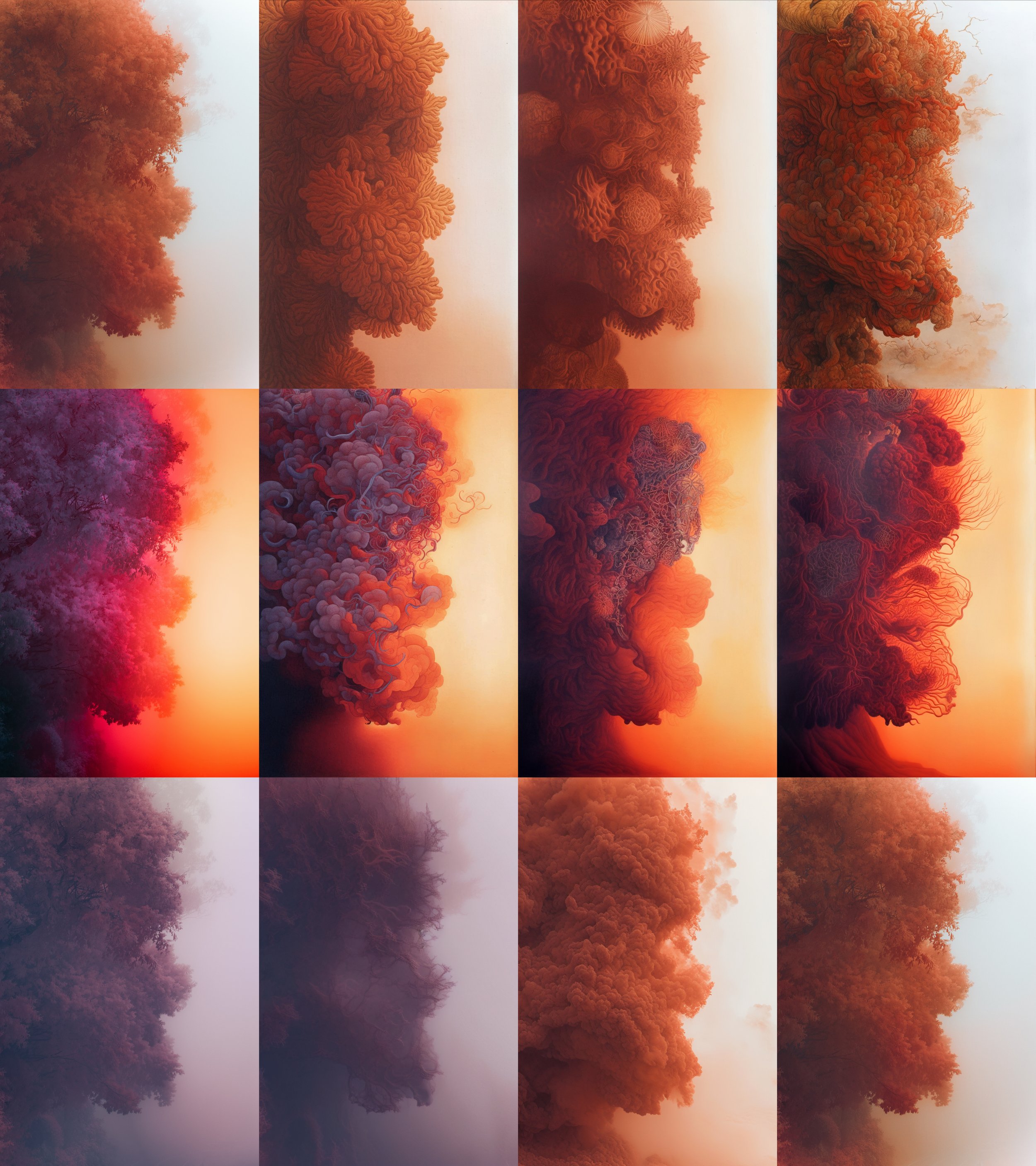
The artwork's rhythm and pace replicate the gradual awakening of the eye and neural pathways, allowing for true discovery and challenging the viewer to question what meets the eye. By allowing the tree's non-ordinary life and image to evolve, the viewer's understanding of it expands, leading to a metamorphosis that reveals its truest definition.
To achieve this heightened awareness, the artwork incorporates respiration, high-level machine learning, psychedelia, and photographic exposure to an invisible light spectrum. The intention is to peel back layers of diffusion and blockages, invoking a guided meditation crafted through a learning machine paired with the organic invocation of the spirit of nature.
“A metamorphosis is at hand that does not distort or deform, but reveals the truest definition. This truth is only detectable in a state of heightened awareness – here achieved through respiration, high-level machine learning, psychedelia, and photographic exposure to an invisible light spectrum.
The intention is to peel back layers of diffusion and blockages, to invoke a guided meditation of sorts that is crafted through a learning machine paired with the intuitive, organic invocation of the spirit of nature.
To the machine, the tree is a conglomerate of pixels. To the human eye it is comprised of cells, even more so, to the naked eye it has leaves, branches, a trunk, bark. Both systems, the machine learning and the human viewer, are initiated into an altered state in which the tree begins to breathe and grow.”
Both machine learning and human viewers experience an altered state in which the tree begins to breathe and grow. The journey of microcellular breathing causes the audience's vision to be repeated, patterned, alive, dismantled, and reformed, revealing the beauty of the artwork. Machine learning is given its own equivalent of a psychedelic dose in the form of prompts and embeddings, leading to the subdivision of the pixels and the tree's genetic and photographic makeup, resulting in a digital organism.
The intent and techniques used in the artwork are deliberate, but the outcome is mostly unknown. Transformation, mutation, and change, on a digital micro cellular plane, and a soulful one, must be allowed to surprise and expand. The artwork's First Breath becomes the trigger to unveil what lies beyond and challenges the biological status quo, resulting in a euphoric, transcendent, and elemental experience.
The festival will be held on March 23, 24 and 25 at Disseny Hub Barcelona, a few weeks earlier than usual, since in April the digital art exhibition "Digital Impact" will be held at the same venue for the first time.
The festival presents a powerful lineup in its 22nd edition, bringing together a total of 65 speakers linked to the field of creativity, design, visual art and digital culture from countries such as the UK, USA, Canada, Germany, Mexico, Netherlands and Spain. Among the special invited artists are Alex Trochut, Brian Collins, Eddie Opara, Found, Framestore, Timothy Goodman, Gemma O'Brien, the iconic David Carson, Joshua Davis, James Victore and State, among many others.
OFFF, the festival renowned for constant change and diversity, is proud to announce its latest creative representation for 2023: “Cube.” “Cube” embodies the amazement and surprise artists evoke from the audience and begins with a set of rooms symbolising the diversity of the festival's speakers and artists' creative practices.
The OFFF's “Cube” campaign was brought to life by a team specially assembled for this purpose, consisting of Vasava, Barcelona (concept and creative execution), Found, London (CGI and motion), and Combustion, São Paulo (sound design and music). With its visually stunning and thought-provoking concept, OFFF 2023 promises to be a truly inspiring event that celebrates diversity, constant change, and the power of creativity.
Heterosis - the increase in such characteristics as size, growth rate and yield of a hybrid organism over those of its parents.
Snark.art, the innovation laboratory supporting artists creating at the cutting edge of art and technology, announces Heterosis, a new series of digital artworks and an immersive metaverse experience by Mat Collishaw. Created in collaboration with digital artist Danil Krivoruchko and metaverse architect EL-GABAL, Heterosis is a project produced for the OG.Art platform which combines blockchain technology and art to create a unique experience for collectors.
Heterosis will see participants cultivating and breeding virtual flowers that grow in a hyperrealistic metaverse ‘greenhouse’ – a digital recreation of a grandly decorated wing of London’s National Gallery, abandoned and reclaimed by nature. Each flower will be a one-of-a-kind, unduplicable digital artwork, but the works, both individually and collectively, become meaningful via the community that is created. Based on innovative technology, Heterosis invites collectors to participate in an art ‘game’ where their interaction determines the outcome of the works. The participatory nature of Heterosis means the artwork could not exist in any context other than on the blockchain.
Mat Collishaw and Danil Krivoruchko, Heterosis, 2023 © Snark.art
Upon minting, each collector receives a Heterosis flower with unique DNA code and the combination of a few basic traits. Through hybridisation, collectors can discover advanced characteristics or mutations, and unlock new species, colours, patterns and forms. Their actions and engagement with one another will determine how the creation of new species and increasingly exotic and elaborate blooms unfolds. They become the agents of digital evolution and digital art collaborators.
Mat Collishaw and Danil Krivoruchko, Heterosis, 2023 © Snark.art
The digital flowers have been developed using SideFX’s Houdini – a powerful 3D animation and visual effects tool used in blockbuster films, commercials and video games – and are rendered on Redshift. Uniquely, the hyperrealistic flowers are created via a process of hybridization that is not predetermined, requiring advanced technology to generate the dynamic content. The metaverse ‘greenhouse’ was developed using Unreal Engine, the state-of-the-art gaming technology to allow collectors to interact with one another and freely explore the environment no matter where they are in the world. The technology means they can have an interactive, collective experience on any device with exceptionally high-quality visualisation.
Mat Collishaw and Danil Krivoruchko, Heterosis, 2023 © Snark.art
To hybridize, collectors must pay the flower’s owner a breeding fee. Collectors themselves set the prices for hybridization which can reflect if significant resources have been spent to create a new rare and exciting combination of genes. These dynamics create two separate markets – one for the purchase digital flowers and another for selling the opportunity to hybridize your flower.
Mat Collishaw and Danil Krivoruchko, Heterosis, 2023 © Snark.art
Heterosis builds on Collishaw’s practice and cross-disciplinary approach which sees him engage with developments in technology and unafraid to venture into unfamiliar terrain. He says of the collaboration:
“I wanted to create an artwork that could not exist in any context other than the metaverse. The digital network that forms the basis of Heterosis allows all the participants and components to come together, bringing the artwork to fruition. The fact that the work can evolve through time, depending on what the owner will or won’t do, was something very interesting for us. Danil managed to encode all the different traits into DNA and designed an evolution process. These mechanics, are essential to the Heterosis project and are especially valuable to us as something that’s possible only in a decentralized space”

Mat Collishaw and Danil Krivoruchko, Heterosis, 2023 © Snark.art
“This is the most complicated digital art collection I have ever worked on. Mat wanted Heterosis NFTs to be real flower species. A real life reference, which is super complex on the one hand and so familiar to everyone on the other, meant that even the goal of achieving a photorealistic visual was technologically very complex”
Since 2012, Kim has been working with digital software to develop a visual language of shifting multidimensional gradients that explore the interconnectivity between physical and digital consciousness. Previewed at our solo booth presentation at Art SG in Singapore, SuperBlue v.3 creates a digital Zen experience, using visual guides and healing sound frequencies to encourage a meditative state.
It is a digital meditation experience that uses visual guides and healing sound frequencies to create a meditative state. The collection of 100 NFTs is created by Krista Kim and Efrén Mur, with music by Ligovskoï.
Every edition in this release comes with an accompanying Infinite Objects physical display screen
For the 2023 edition of ART SG in Singapore, Unit London presents a solo exhibition of new digital and VR artworks by pioneering artist Krista Kim.
Digital poetry created by Konstantin Bondarev is a form of electronic literature, that displays a wide range of approaches to poetry, with prominent and crucial use of computers.
Words on the running lines cross through the hall of mirrors, break out from the clouds and illuminate the darkness.
Undoubtedly, talent is 99% of sweat and 1% of genius. Exploring Grisha’s works proves this many times, bringing joy and delight by just looking at them. The attention to detail is beyond compare and the speed paint skills (you can watch below) are just mind-bending.
Grisha has full success on Tiktok and recently landed on the NFT scene with full potential to shine bright like a prodigy

Self-taught ballpoint pen artist and conceptual self portrait photographer Adewale Mayowa shares amazing talent and skills through the NFT journey
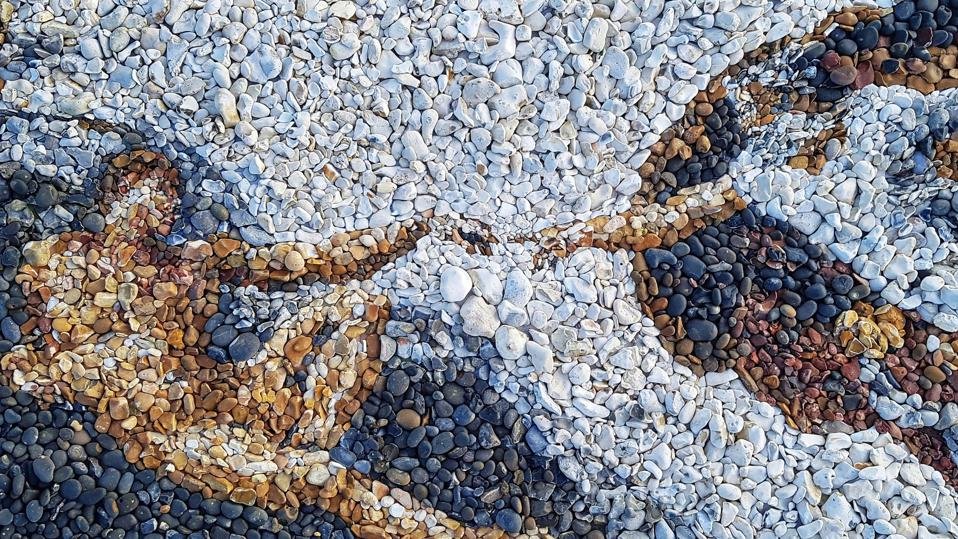
Southeast Asia-based British environmental artist Justin Bateman creates outstanding artworks by using only pebbles found on beaches. Please read the full Forbes interview on how he went from classic British art education to finding his own inspiration on the faraway beaches
Designcollector network (2003) founder Arseny Vesnin, the curator of self-initiated Digital Decade (2013) art collaborations, presents artists drop in a series of "Digital Decade NFTs".
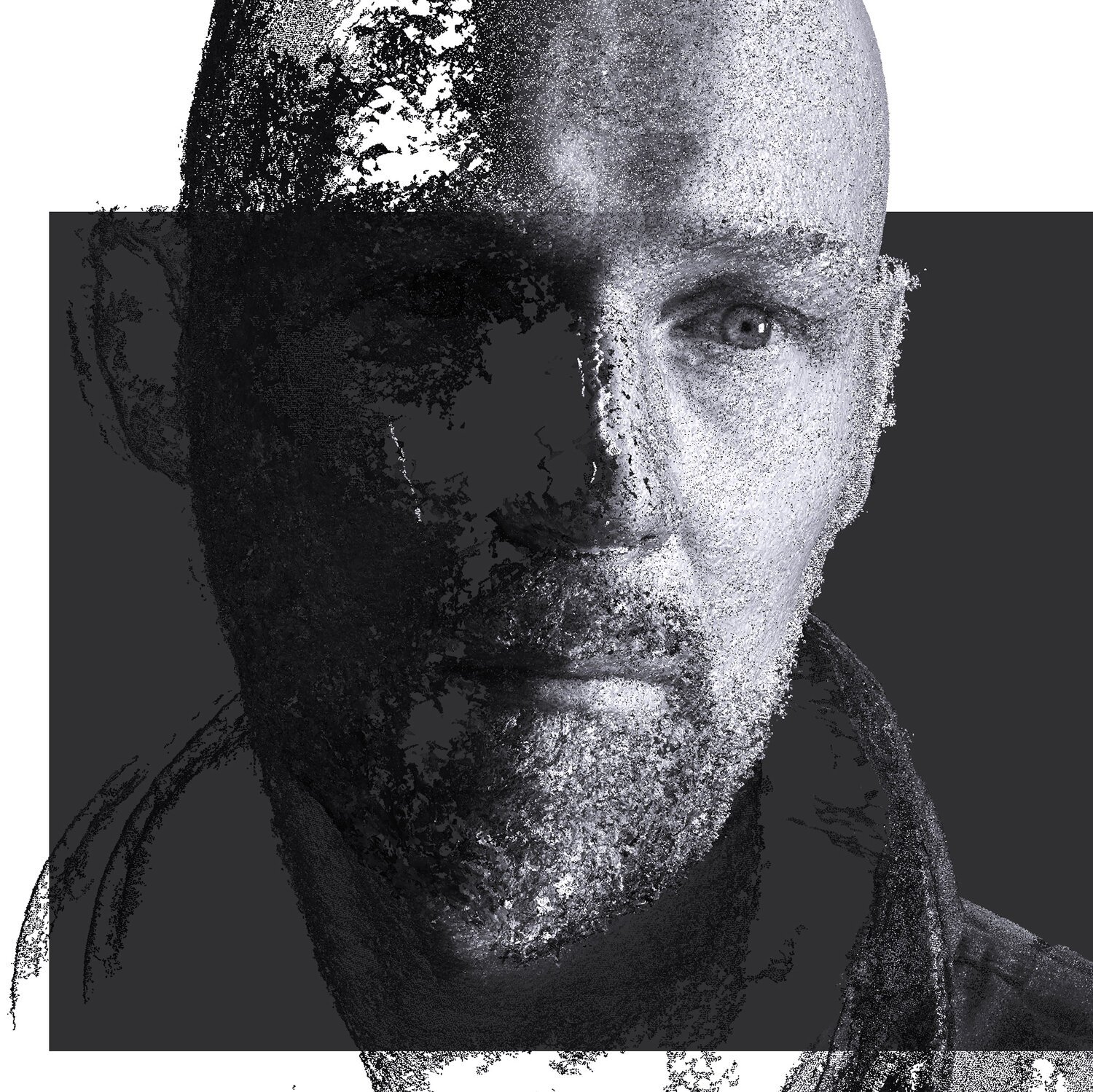
Dimitri Daniloff
is a Barcelona-based artist who has moved from pure photography and photogrammetry studies into the virtual world, aiming to explore the relationship between human consciousness and the digital void.
Dimitri Daniloff (b.1970, France) developed body awareness from an early age as the son of a sculptor. He has since cultivated a connection to texture and materiality. Fascinated by the numerous possibilities that technology offers, he first experimented with 4x5 view cameras and then turned to the practice of digital art. A shift, since he then started to transform his images. He now produces new scenes of everyday life by assembling raw elements with real subjects – always finding the right balance between authenticity and fiction. His campaign for PlayStation is a great example of this tension: deconstructed bodies knocking together and questioning our boundaries.
Another turning point in this creative artist’s career was his collaboration with the electronic music band Daft Punk. Producing the Virtual Girl project (2008), he integrated 3D creations into his existing pictures, thus proposing his own vision of an augmented human being. A few years later, Dimitri Daniloff started focusing on photogrammetry – a process consisting in taking measurements in space and building, through software, a 3D model from several viewpoints.
By integrating this technique into his practice, he inserted the virtual world into the real world. He created, in collaboration with plastic artist Tamal De Canela, L’humain illimité (The unlimited human), a project built around a virtual character still anchored into reality. Cleared from his corporeal envelope, the subject – half-man, half-God – pushes the limits of 2D image, body and thoughts. In this undefined space and time, borders no longer exist and humankind – and its extensions – finds its independence. The modern Prometheus owns as many masks as there are identities. “Give him a mask and he will tell you the truth”, Oscar Wilde said with irony.
Appearances press Dimitri Daniloff to question men's flaws - what still resists. And in this quest, the artist surrounds himself with other specialists: dancers, architects, decorators or even graphic designers. Highlighting the vulnerability of mankind thus turns into a political act, turning the stage around. More than a plastic artist, Dimitri Daniloff prevails as a sculptor of reality.
In January 2019 Daniloff was invited by EDF ODYSS ELEC (France) to make his first VR piece in collaboration with Ferdinand Dervieux. The piece was supposed to be presented at the VR Arles Festival but will be presented in an other event linked to VR Arles Festival later in 2020.
In 2020, Designcollector’s founder Arseny Vesnin invited Dimitri to take a part in Digital Decade SE 2020 - an online exhibition on the Sedition Art Platform.
Series of six 1/1 NFT drops
“Imagery fascinates me because it questions our take on ourselves, and on our bodies especially.”
A small, intimate room that protects us from the vastness. As "The Milkmaid" by Vermeer, we inhabit the space, lost in our thoughts. But in this room we are not lost, we inhabit the virtual world, with a space that protects us. A virtual space, which is also real, two universes that meet, that confront each other. Above all they complement each other, the virtual space does not try to resemble the real world, it finds its own space, which is a combination of both. And that is the freedom of these rooms without a roof, that we can enter and exit, from both worlds, as if they were one.
And we can penetrate them, they are not photos, they are rooms, they are spaces to enter, to become part of the image. Become shells, like these people, like these characters, be statues, rigid, colourless, be bodies, sensual, Greek, perfect, imperfect, full of defects, like existence itself, but we multiply, and we can observe from different angles.
We can challenge perspectives and windows that do not fit but do not want to. Invert the process, create something, stop organizing everything and then take a picture, start with photogrammetry, to create the image with the captured elements, inventing combinations, unexpected, open to amazement. Enter everyday objects, as if they were every day.
And the looks remind us that it is the real world, that they can be confused, that we can be gods, above, we can invite the skull to a world without death, to a world where there will be no end, where our identity is fragmented, like small pieces, never erased, we leave traces of us in this virtual world.
These images, photos and non-photos, inhabit the appeared world, which does not want to be real, or virtual because it is both and that’s what gives it its strength, its limitlessness and its uniqueness. A universe where flying is allowed. Where originality dwells, an authentic universe that resembles what he has dreamed of himself.
“These images were originally produced between 2018 and 2019 as I was exploring photogrammetry and breaking the rules of photography. Special thanks to Tamal de Canela for the 3D support.”
For the 2022 NFT release, Designcollector is happy to release 1 of 6 artist work (above) on our special Digital Decade NFT smart contract aimed to reveal art names we have collaborated with through our offline and online events.

Illustrator Nani Tamoona uses AI and clever “prompts” (“using it is like talking to AI chatbot in that you provide text, asking it to make an image, and it gives you an answer” - thoughts on AI art by Eric Wayne).
The way Nani aka Moonchildtamoo uses AI as a base for her work is outstanding and proves that generated art can be beautiful and captivating

Feel The Data, 2011, Designcollector iPad Magazine
Designcollector network (2003) founder Arseny Vesnin, curator of self-initiated Digital Decade (2013) artist collaborations, presents a fresh drop in a series of "Digital Decade NFTs".
Anton Marrast is an illustrator and digital artist from Barcelona, who creates surrealistic characters and stories, inspired by his life and feelings. He defines his style as "psychedelic surrealism".
"Feel the Data" is an illustration Marrast created for Designcollector's iPad Magazine "DCMAG" in 2011.
“In the near future, the sense of touch is going to be upgraded to fulfil and extend five wits given us by nature””

What would the Sagrada Familia look like if it was finished? Imagine a full circle Colosseum... Dutch artist duo DRIFT has been working to improve their drone software to create real-life, life-size renders to visualise the improbable.
DRIFT works together with a multi-disciplinary team of 64 on aerial sculptures, installations and performances. All individual artworks have the ability to transform spaces. The confined parameters of a museum or a gallery does not always do justice to a body of work, rather it often comes to its potential in the public sphere or through architecture.
In 2017 DRIFT made their first performative art installation named Franchise Freedom. This drone show premiered at Art Basel Miami 2017, followed by performances all over the world. Besides this performative art installation DRIFT produced many more, with which the world is well known.
In collaboration with the company Drone Stories and Nova Skystories, DRIFT has used their drone technology since 2020 to reimagine the future of architecture. It is the aim to assist architects to bring their future projects to reality in a mesmerising yet sustainable way, visualising what this life size would look like.
Unexpected combination of ethnicity and futurism is the key to balance past and future and be a true life surfer. This look is for brave adventurer who is hungry for new experience and preserves memories in the galaxy backpack.
Utility: ARTISANT will airdrop The Sandbox NFT fashion wearable to all holders. You will be able to use your fashion garment in The Sandbox Metaverse by connecting your wallet.

Random International and Danil Krivoruchko, Life in Our Minds, 2022 © Pace Verso and Snark.art
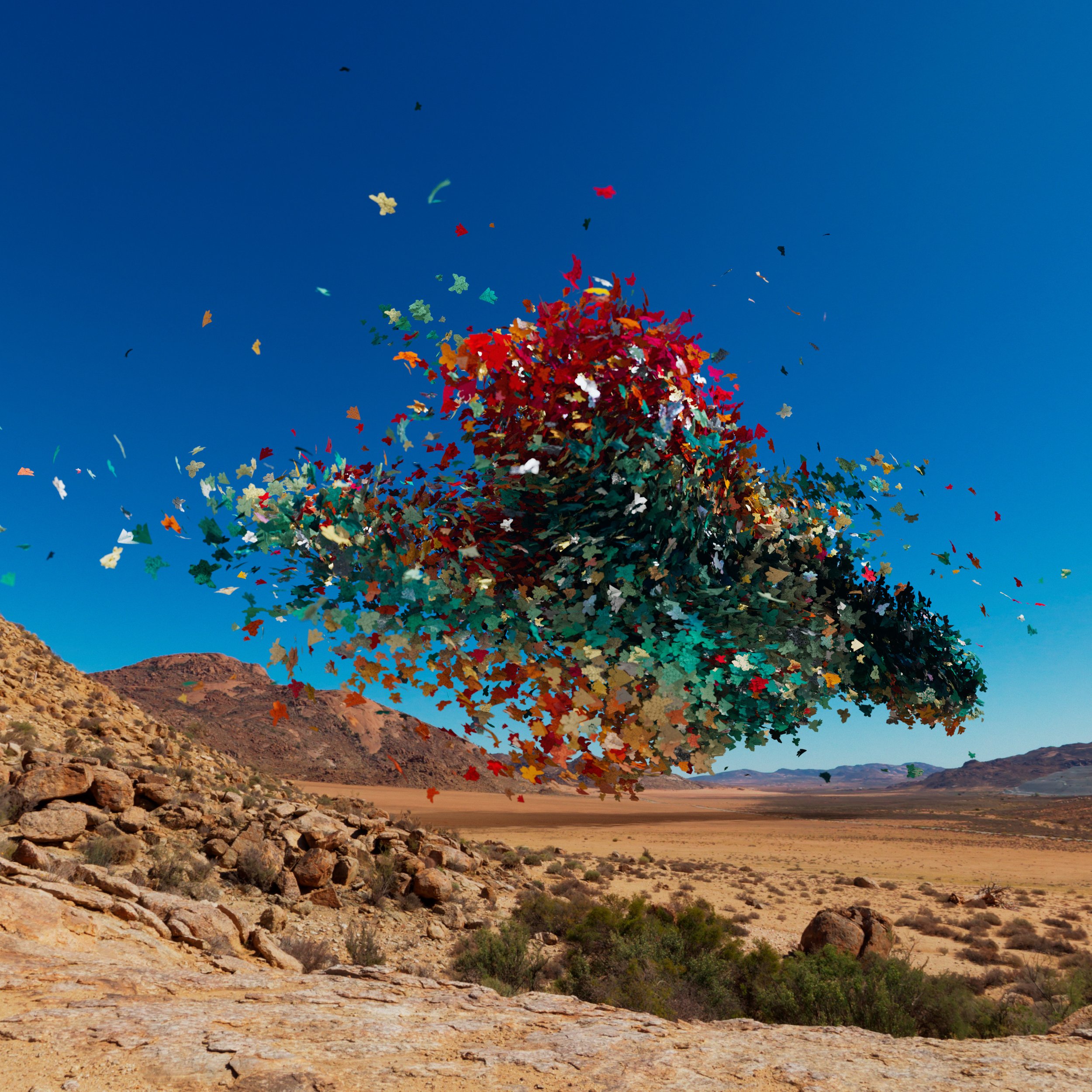
Life in Our Minds incorporates boundary-pushing technology that enables buyers to actively participate in the formal evolution of the NFTs to make them rarer. Together, the individual NFTs make up a large-scale virtual sculpture titled Mother Flock, which transforms in tandem with its constituent parts.
Pace Verso, Pace Gallery’s web3 hub, and Snark.art’s OG.Art NFT platform is pleased to announce a new generative NFT project by Random International—the experimental art collective known for its large-scale, interactive installations, including the widely exhibited, immersive Rain Room (2012)—in collaboration with multidisciplinary digital artist Danil Krivoruchko, co-creator of the OG: Crystals NFT project. Titled Life in Our Minds, the two-part project comprises an animated NFT collection and a related interactive video sculpture — titled Mother Flock and made up of the individual NFTs — that will be unveiled later this year.

Upon minting, each Life in Our Minds NFT features a small group of Boids, 3D bird-like origami objects. The visual traits of any given Life in Our Minds NFT are initially generated and evolve according to the content of its owner’s wallet, among other factors. The longer a Life in Our Minds NFT remains in a single collector’s wallet, the rarer and more elaborate its formal characteristics become: the number of Boids may increase, and their formations and decorative patterns may change. These interactive, 3D video NFTs are distinguished by their continuous development, which is achieved through the highly complex and inventive technological processes of the Life in Our Minds collection.
In this way, the evolution mechanics of the project offer collectors the opportunity to actively participate in the creation of the artwork as it shapeshifts, incentivizing long-term retention of the NFTs. By encouraging purchasers to retain their Life in Our Minds NFTs for extended periods, the artists and project partners aim to upend typical behaviours in the crypto market—including speculation and flipping—and, in the process, introduce a new generation of crypto collectors to the space.
Life in Our Minds has collaborated with Flamingo DAO, Pleasr DAO, Fingerprints DAO, PROOF Collective, Tom Sachs Rocket Factory, Moonbirds, Outland, Pace Verso, OG:Crystals, Ksoids, and 89 Seconds Atomized to offer custom evolutionary traits that are only available to people who hold NFTs associated with these partners. Additional custom patterns that holders of other NFT collections can achieve will be announced at og.art/collections/liom.
The Life in Our Minds NFTs are part of a constantly evolving Mother Flock virtual sculpture, which reflects the formal transformations of the individual NFTs. The Mother Flock’s visual traits are informed by the behavior of its constituent Boids, bringing ideas about the power of both collective and individual action to the fore of the project. A special web version of the Mother Flock will live permanently on the OG.Art platform, freely accessible to viewers around the world. Deeply engaged with scientific research surrounding the psychology and behaviors of both humans and birds, Life in Our Minds is one of the most collaborative, technologically innovative NFT projects to date.
In an artists’ statement, Random International says: “Life in our Minds continues our exploration of the human tendency to ascribe character, intent, and narrative to the complex behaviors of simple moving forms, as well as the subconscious instincts and emotional triggers that cause us to do so.” To mark the launch of the project, Pace will host AMA discussions with the artists on Twitter Spaces and OG.Art’s Discord in October. Further details about these programs will be released in the coming weeks. Life in Our Minds is realized as part of a collaboration between major forces in the contemporary art and crypto worlds.
The art collective Random International, which was founded in 2005 by Hannes Koch and Florian Ortkrass, has shown its large-scale multimedia works at major art institutions around the world. Krivoruchko is an award-winning artist and creative director involved in the production of multiple upcoming OG.Art collections. Snark.art has been producing acclaimed web3 projects since 2018, including OG: Crystals, a collection of more than 10,000 unique NFTs; it launched the new NFT platform OG.Art this year. Pace, which launched Pace Verso in 2021, is a leading international art gallery with nine locations worldwide. Founded by Arne Glimcher in 1960, Pace represents influential contemporary artists and estates from the past century.
Random International is a post-digital art group exploring the impact of technological development on the human condition. Best known for its large-scale interactive installations, the group works across an array of media, including sculpture, light, kinetics, video, print, and sound. Established in 2005 and led by founders Hannes Koch (b.1975, Germany) and Florian Ortkrass (b.1975, Germany), the group has a studio in London and comprises a global team of complementary talent. Random International’s work has been shown worldwide and can be found in the collections of the Museum of Modern Art in New York; the Victoria & Albert Museum in London; the Yuz Foundation in Shanghai; the Los Angeles County Museum of Art; and other international institutions.
Snark.art has experimented with the blockchain as a revolutionary medium since 2018, producing various NFT projects and working with established artists from both the contemporary art and crypto worlds, including Mat Collishaw, Eve Sussman, Michael Joo, Ilya and Emilia Kabakov, Nancy Baker Cahill, Kendell Geers, Tommy Hartung, Duke Riley, Cassils, and many others. Snark.art’s OG.Art platform, launched in 2022, is a space not only for carefully curated collections of generative, dynamic NFT art, but for new approaches to creative collaboration. OG.Art invites groundbreaking artists to develop projects based on dynamic NFT technology and community interaction. This technology allows artworks to respond to online and in-person events, enabling collectors to interact with and develop NFT projects in new ways.
Danil Krivoruchko is a Ukrainian-born, New York-based multidisciplinary digital artist and art director whose clients include names like Apple, Nike, Intel, and Boeing. Krivoruchko’s work has won a variety of festival awards. He was nominated for a 2022 Emmy Award for Outstanding Main Title Design as part of the creative team for the television series Foundation. He is also the creator of the renowned One Thousand Ksoids NFT collection and co-creator of the OG:Crystals project. Krivoruchko is actively involved in the creation and production of the first several upcoming collections at OG.Art.
Pace Verso is Pace Gallery’s hub for web3 projects, launched in 2021 under the leadership of Pace President and CEO Marc Glimcher. Pace Verso works closely with artists within and beyond the gallery’s program to incubate, develop, and realize their web3 projects, operating an NFT platform on the Ethereum blockchain at www.pacegallery.com/paceverso.
In addition to releasing independent projects, Pace Verso frequently collaborates with leading web3 platforms to share artists’ work with wide audiences. In 2022, Pace Verso established a multifaceted partnership with Art Blocks, the leading generative art platform, encompassing boundary-pushing generative NFT releases by Pace’s artists as well as crypto-native artists, exhibitions, and community programming. In its first year, Pace Verso—which reflects the gallery’s longtime and ongoing support of innovative artists who have cultivated advanced studio practices engaged with boundary-pushing technologies—has presented NFT projects by Jeff Koons, Zhang Huan, Glenn Kaino, DRIFT, Lucas Samaras, and other artists. Pace Verso has also grown a robust following on its dedicated Discord server, directly engaging web3 communities through discussions with artists and leaders in the crypto space.
Mannerism, Impressionism, Surrealism. We’re all familiar with historical, genre-defining art works. But what is Forwardism?
Forwardism depicts the reimagining of convention, transforming what we thought we knew into something new, something we thought was impossible, and yet here it is before our eyes.
We were challenged to craft visual metaphors of this concept, transforming historical art epochs into works of Forwardism, drawing a parallel to BMW’s re-imagining of what a car should be. The i7 - a magnificent work of design, engineering, and craftsmanship, the flagship of Forwardism.
Director: Shane Griffin
Production : Akkurat Studios
Post Production : Psyop
Year: 2022
He Jiaying (b.1957) is a contemporary Chinese painter known for his distinctive figurative works. His unique ink-wash depictions of female nudes fuse traditional Chinese and Western techniques. The artist continues to live and work in Tianjin, China.
Making portraits with impressive colours, environments and finishes, combining pictorial and digital techniques is one of the specialties of Alex de Marcos, an illustrator from Madrid who has been gaining more and more space in the Spanish art scene. His works are found in all areas of illustration, from children's books, through Kurt Cobain's biography and stickers for Instagram, to advertising for Coca-Cola, Nike, Bombay, among other renowned brands.
These days Alex joined NFT Art movement and his 1/1 works are available on Foundation platform

Waves meditates on its titular phenomena as the fundamental elements of change in digital and physical systems; waves merge, waves disrupt, and, if synchronized enough, they acquire system-shifting force. Cultural shifts, spiritual breakthroughs, and wi-fi connections can all be better understood as products of the interactions of waves. As physical and digital systems become less and less distinct, the ability to acknowledge similarities between the two can make our everyday thoughts more creative.
Maxim’s broader oeuvre is built on conceptual investigations of the building blocks of physical and digital worlds. Each work is an effort to transform a fundamental principle of creation into a rousing spectacle.
“It is fascinating how structures could be assembled by themselves,
following the basic underlying rules of our world. Any material, including living matter, forms using the
same set of rules, and I think that this is something that we take for granted, but it is truly astonishing
when you think about it.”
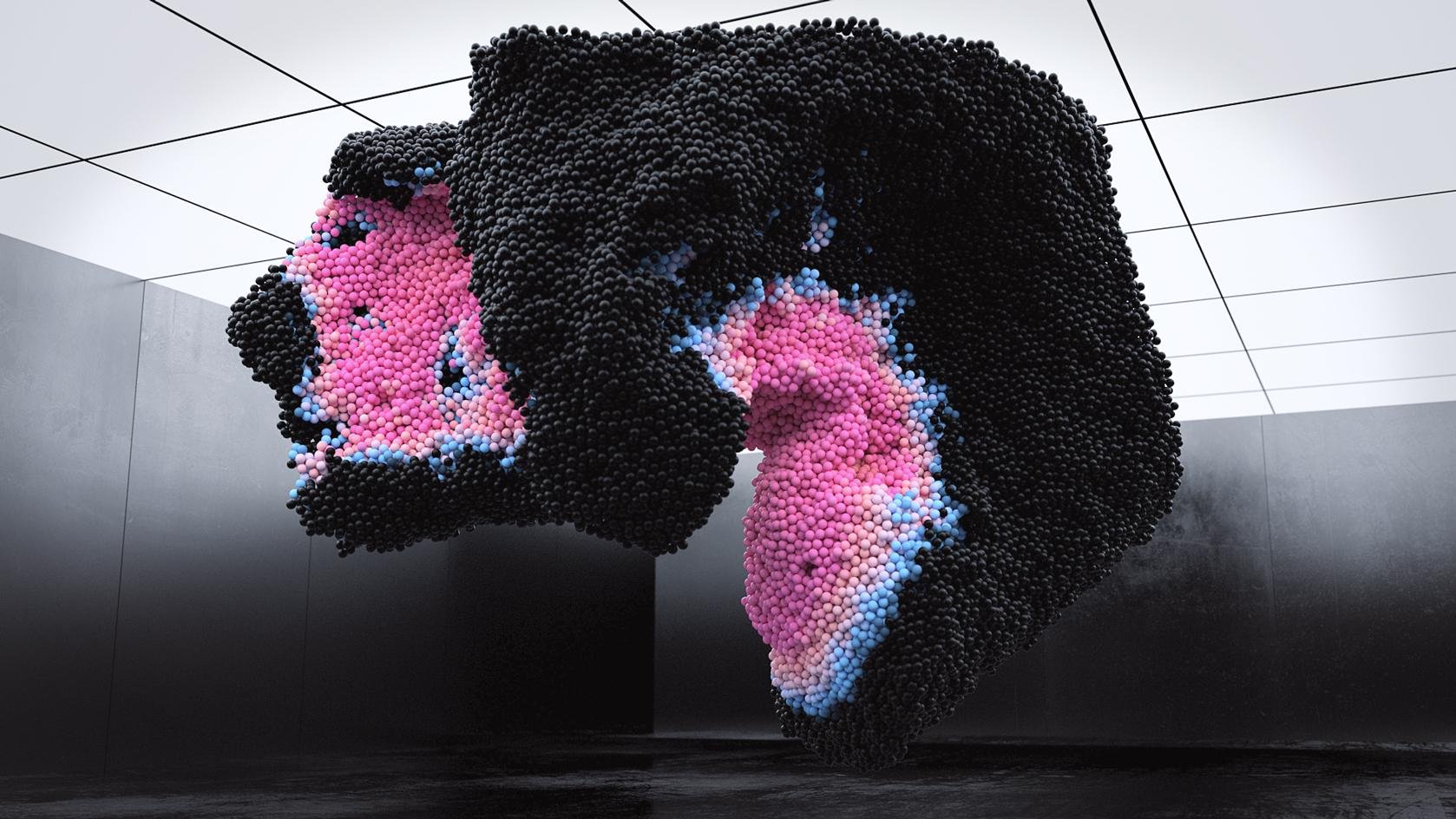
““[W1 Curates is] a public art platform dedicated to bridging the gap between digital art and the traditional art world. Maxim’s artwork lends itself so well to our space, and it’s an honour to share new work from a true pioneer of digital art who remains so passionate about
the potential of virtual worlds.”
A wave— a disturbance of the established order — encompasses dynamics as an inherent part of our world. Waves bring the change, oscillations, and fluctuations, which spread across objects and connect them to entangled networks of all interrelated and continuous events. Inseparable from distortions, they are themselves messages that indicate transformations and shifts.
Waves are primary signals permeating the world and a universal language of nature that underlies both our biological and technological systems. By covering the world with webs of electromagnetic signals, we have expanded our neural systems and can now connect with others able to decipher the coded messages. Interfering and merging, waves change their nature and — when synchronized — grow and transform into a greater entity with the potential to generate a transformative flux.

Connecting particles into mighty flows, Waves is an examination of shifts of energy in complicated systems that lead to the inevitable transformation of those systems. Simulated by an algorithm, the world of this digital artwork is intentionally simplistic and therefore inextricably predictable. However, the rules and principles of this visual complexity are hidden from the viewer, much like the incomprehensible quantum phenomena that define the physical world.
The only thing certain about our world is that it is changing constantly. Nevertheless, eternal movement includes repetition, and transformation is cyclical. Between extremes of peaks, no path is linear, and every shift echoes across time.
Maxim Zhestkov (b. 1985) is a digital artist based in London. He merges his studies in architecture, sculpture, motion graphics, color, and sound, to dramatize the intersection of the digital and the physical as a critical site for imagining the aesthetic possibilities and psychological implications of a “phygital” reality. Working as an independent designer, Maxim has worked with clients like Adidas, IKEA, BMW, Google, Playstation and Adobe and has been awarded with many industry awards: a Red Dot Award, D&AD, iF Design Award and the ADC Award.
Maxim Zhestkov’s work has been presented internationally in shows at major institutions, including Decentral Art Pavilion Venice (2022), Unit London (2021), Contemporary Istanbul (2021), MIT (2019), Modern Art Museum, Shanghai (2019), and the Hermitage Museum (2019). Maxim’s work has also shown at contemporary art festivals, such as Cosmoscow (2021), ART021 (2020), ArtBasel Miami (2019), and Ars Electronica Festival (2018).
W1 Curates is a public art platform located at the heart of London’s iconic Oxford Street. W1 Curates showcases works from some of the world’s most innovative visual artists. Using state-of-the-art technology, the exterior of the Flannels London Flagship store has been transformed into an extraordinary public exhibition of art with digital prowess and exceptional innovation. The venue consists of a three-story facade of screens and, as of August 2022, an all-new exhibition space consisting of a 400 square-metre immersive gallery space lined with 360 degrees of bespoke LED screens.
W1 Curates has displayed work from the likes of Tracey Emin, Jeff Koons, Kaws, Shepard Fairey, Tyler Mitchell, David LaChapelle, Whisbe, Katherine Bernhardt, MrStarCity, David Bailey, Vhils, and many others. It has also collaborated with the likes of Gagosian, Sotheby’s, Saatchi Yates, Tate Modern, and Artsy. W1 Curates has also hosted Ravensbourne University London, NFT UK, Amplifier Art, and Graduate Fashion Week.